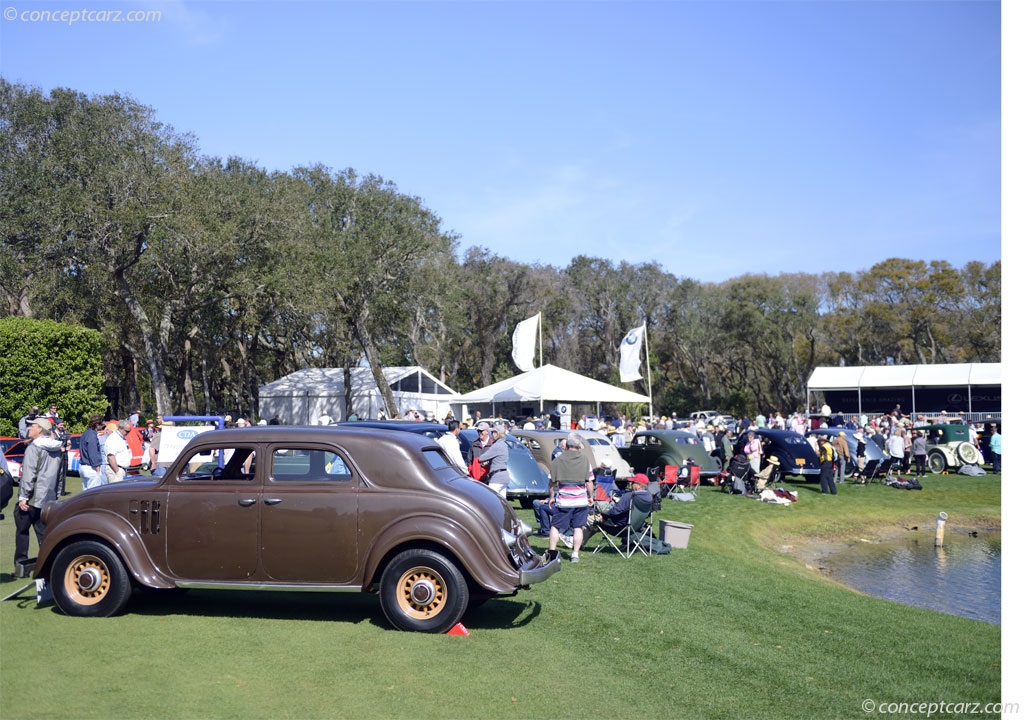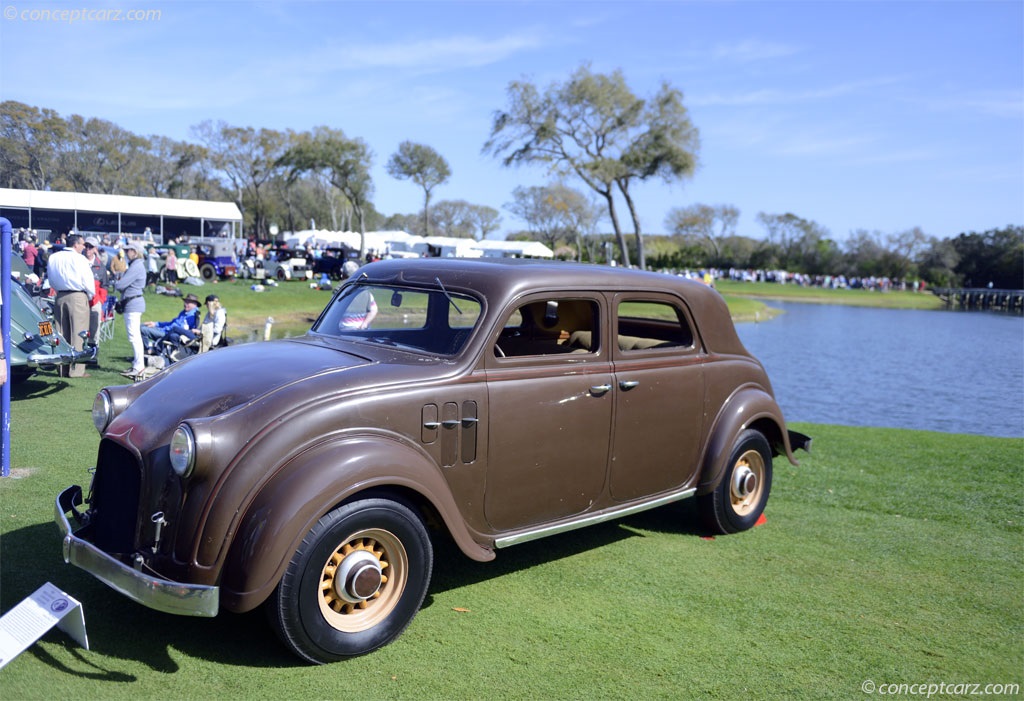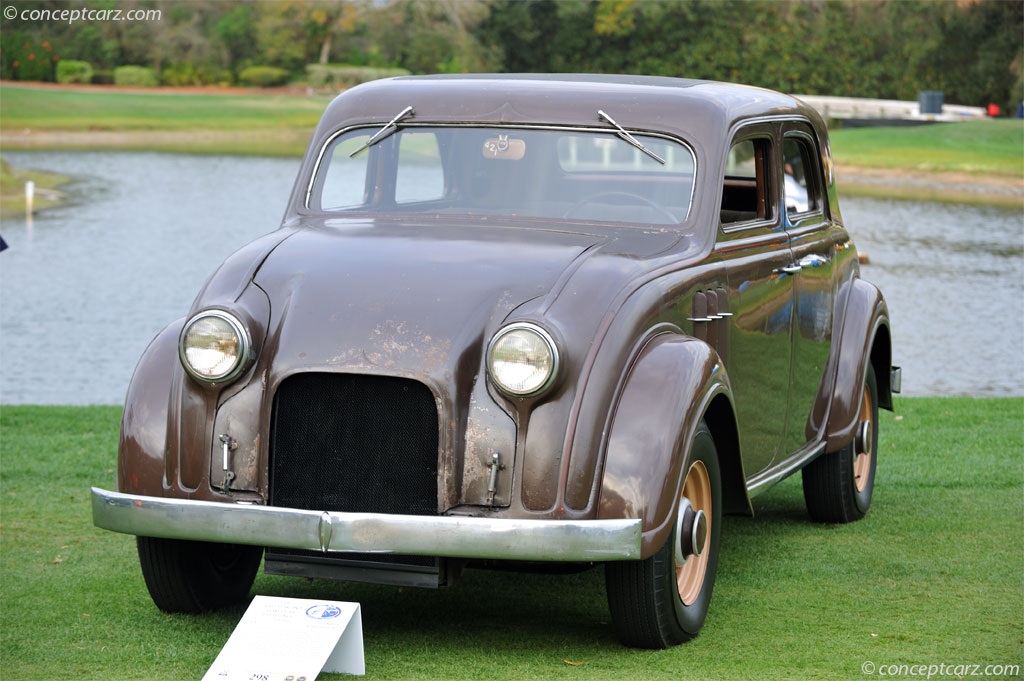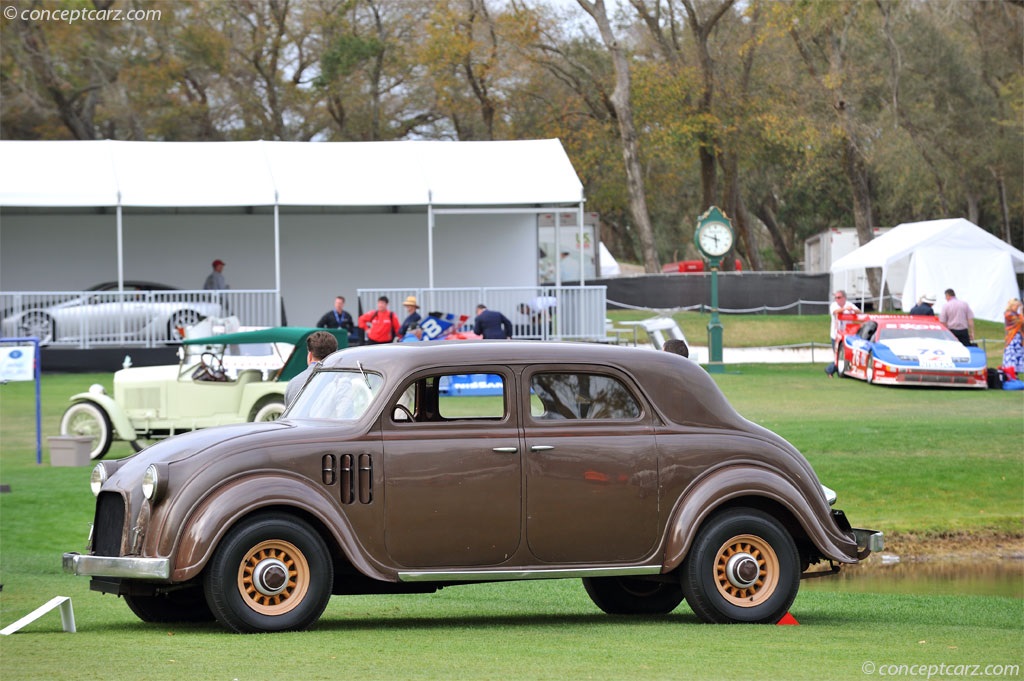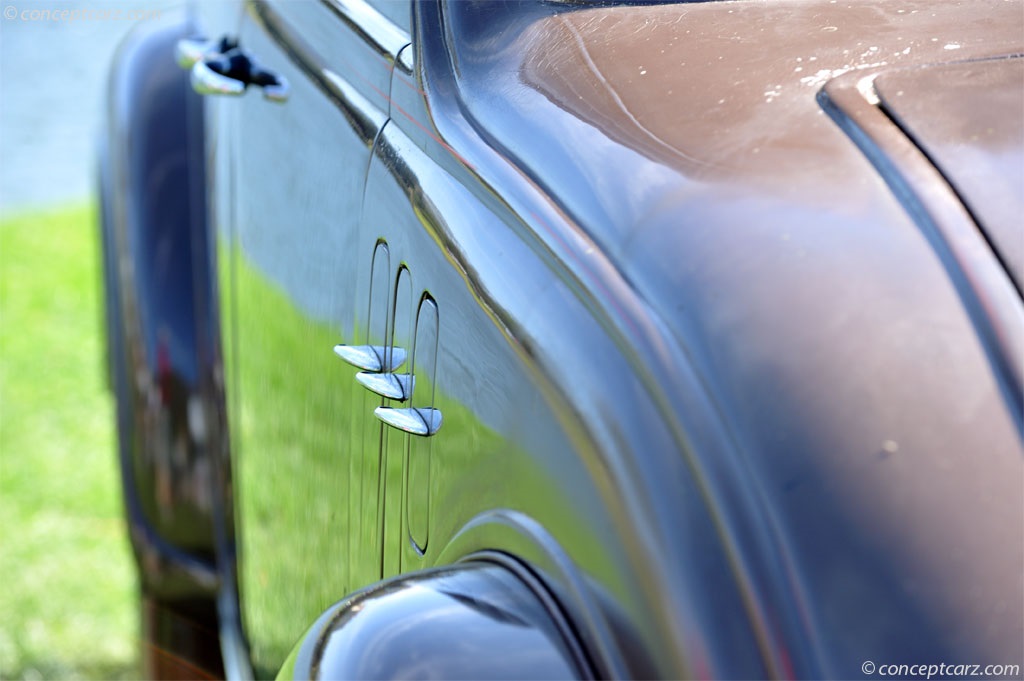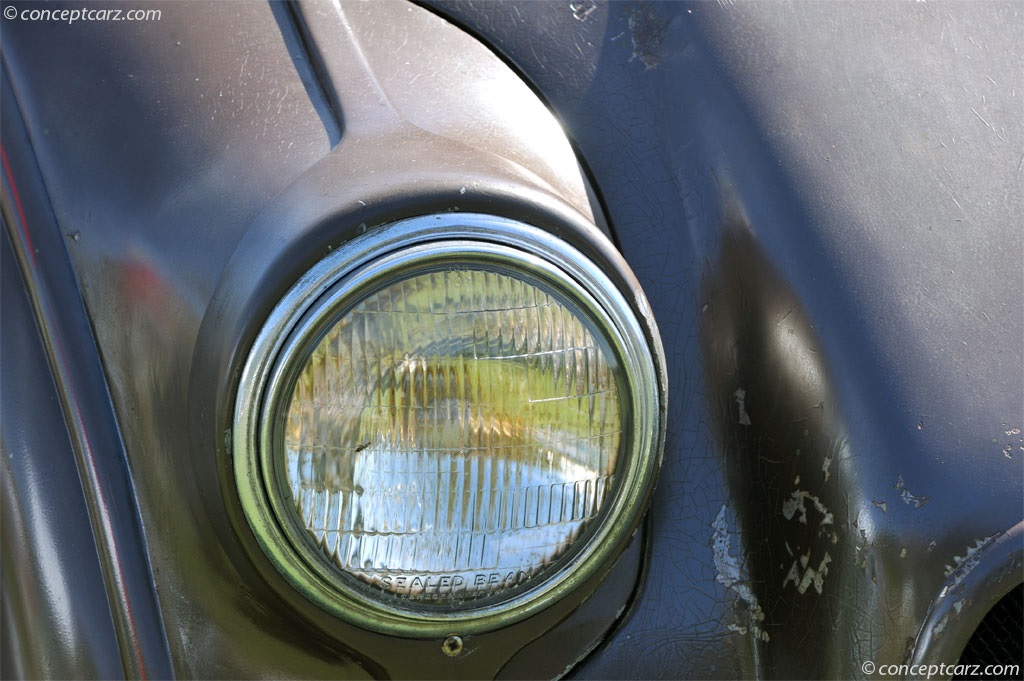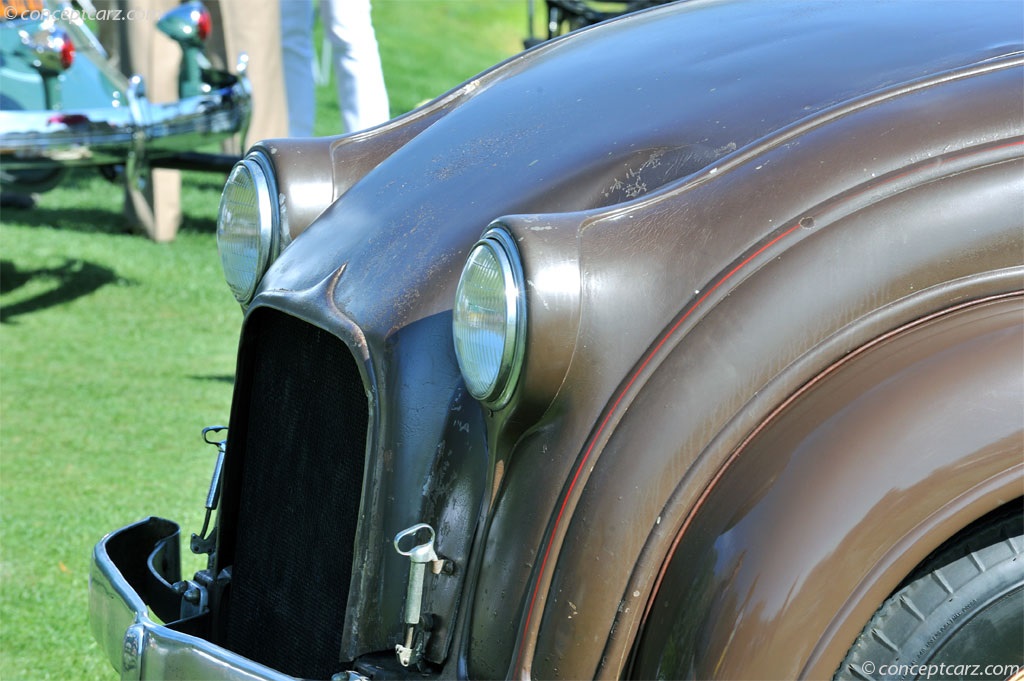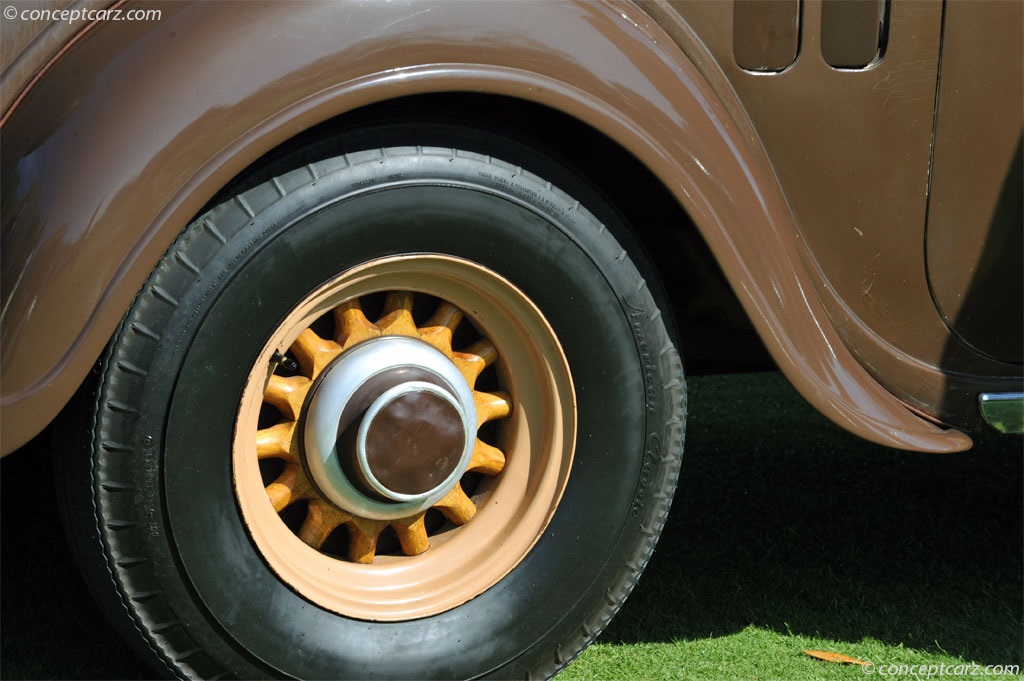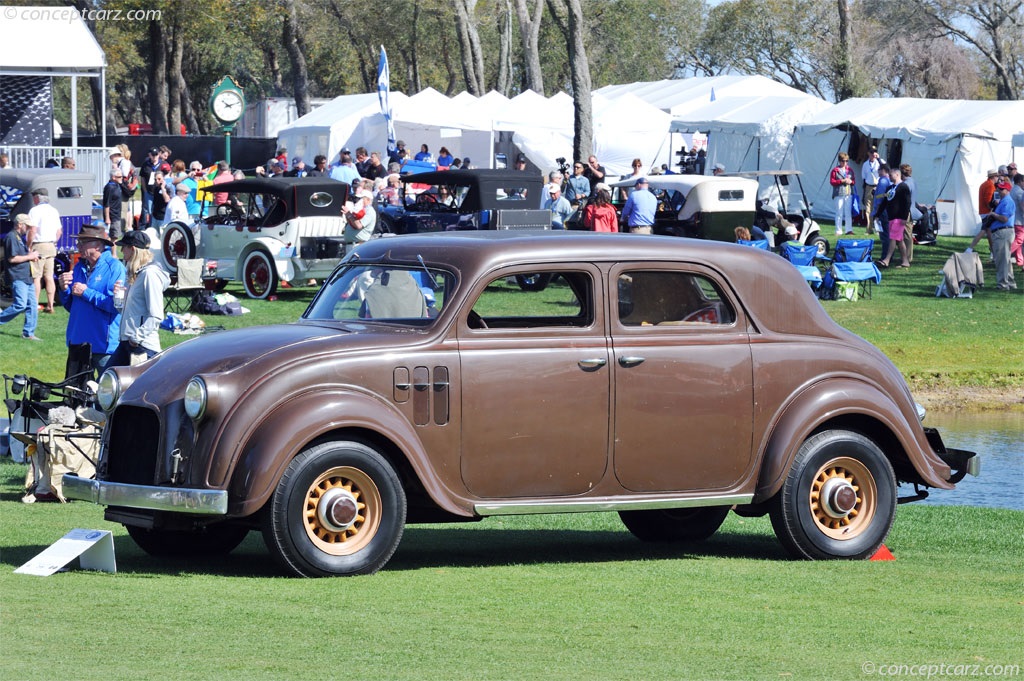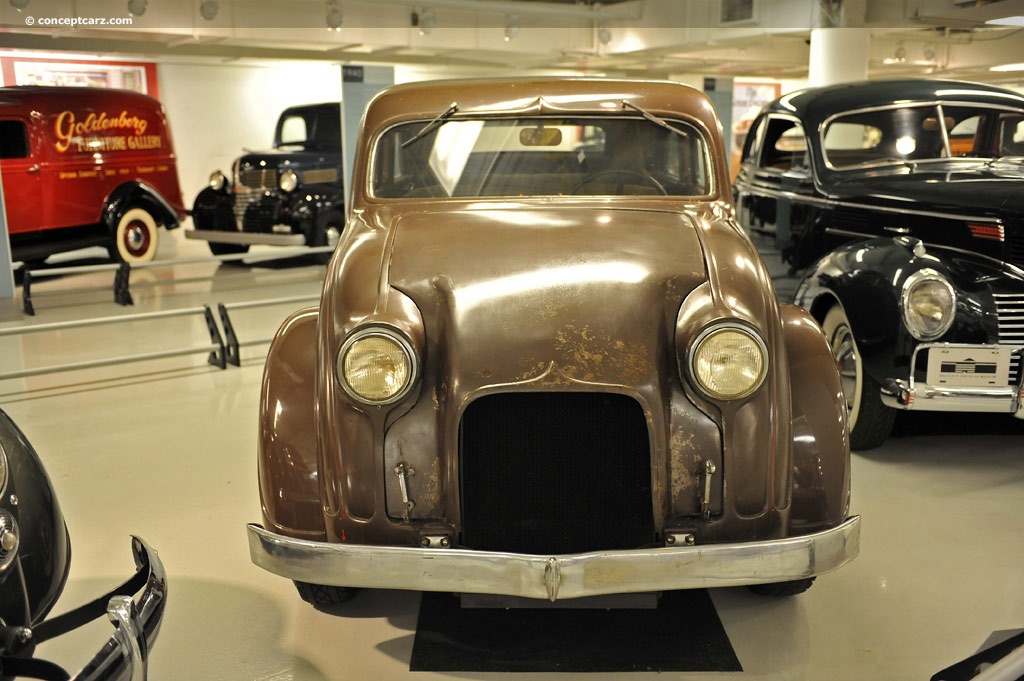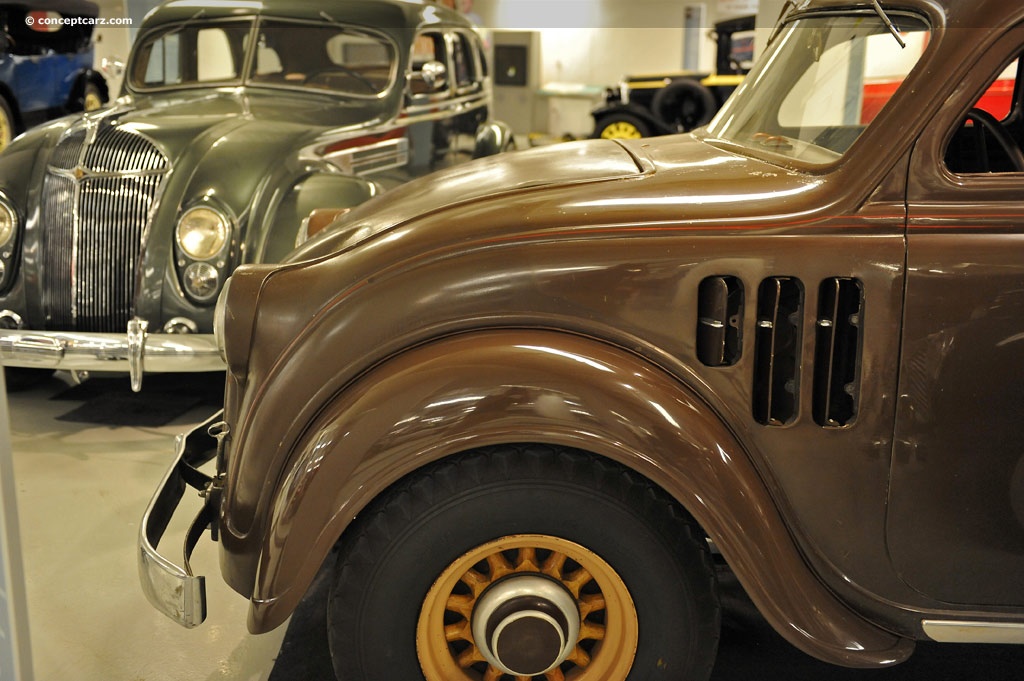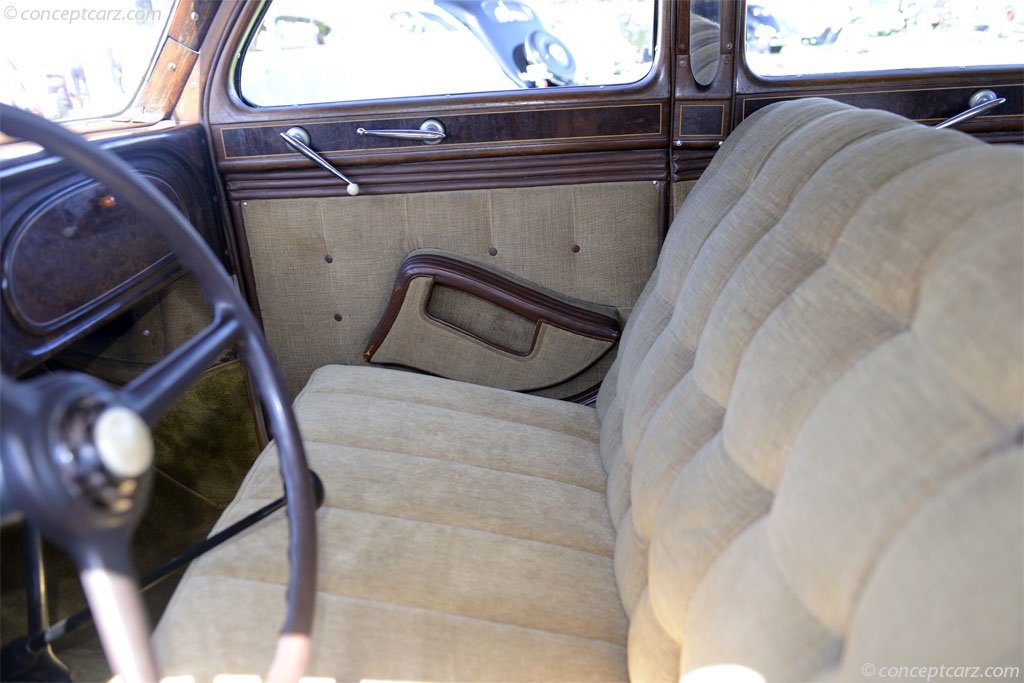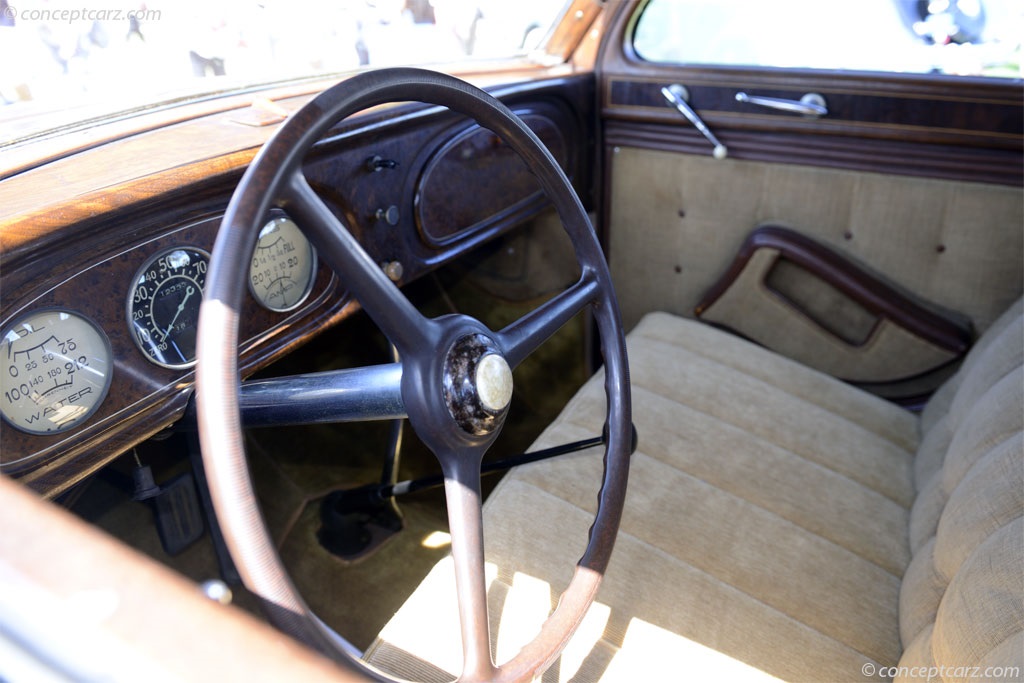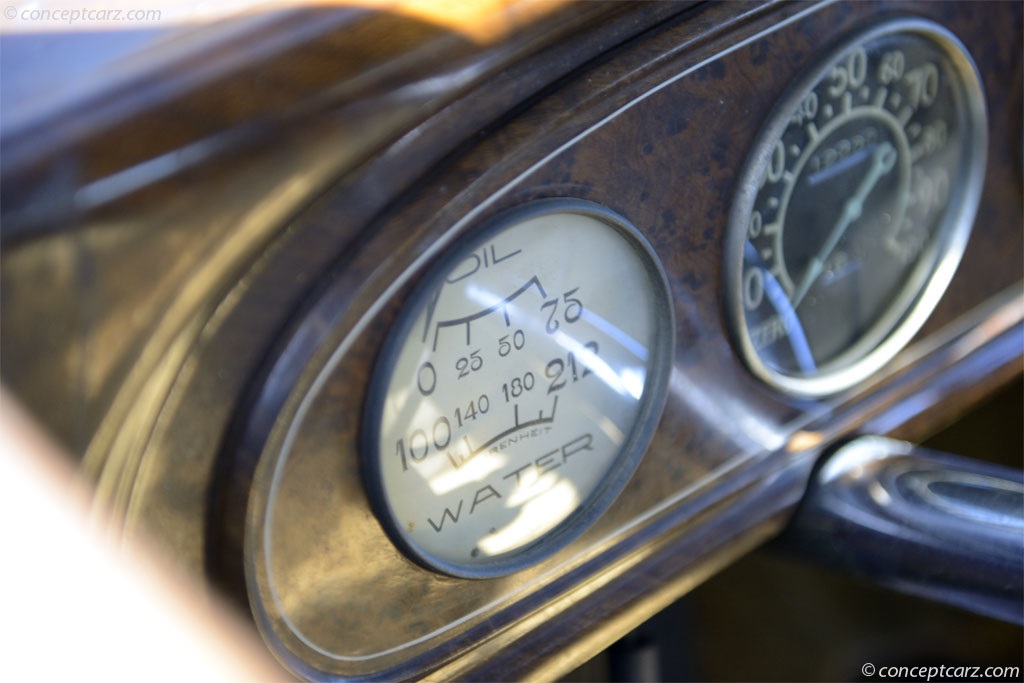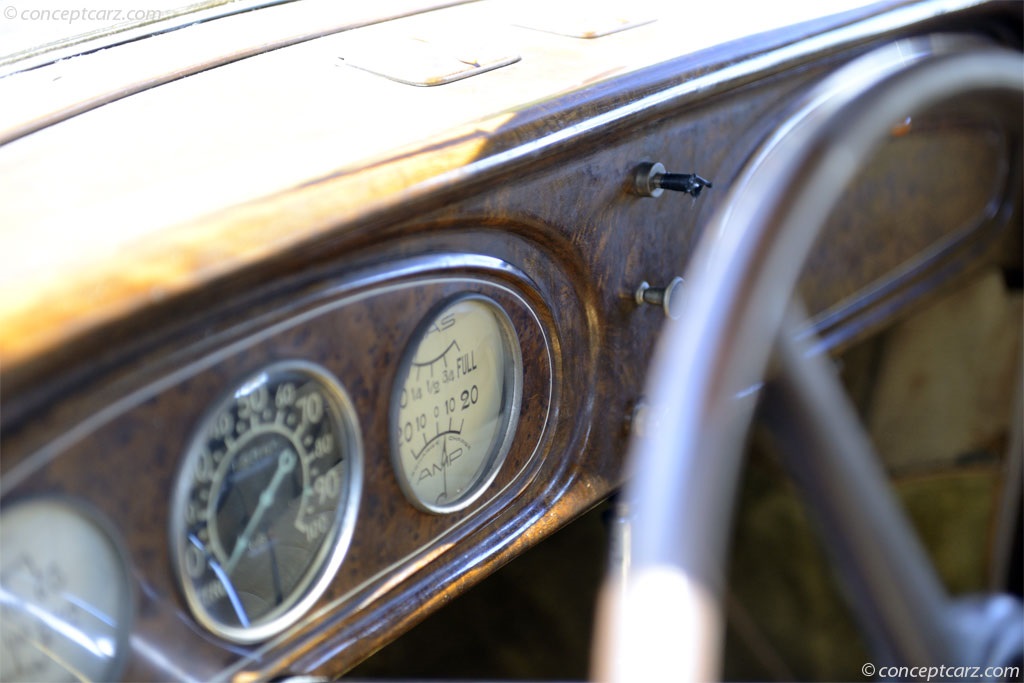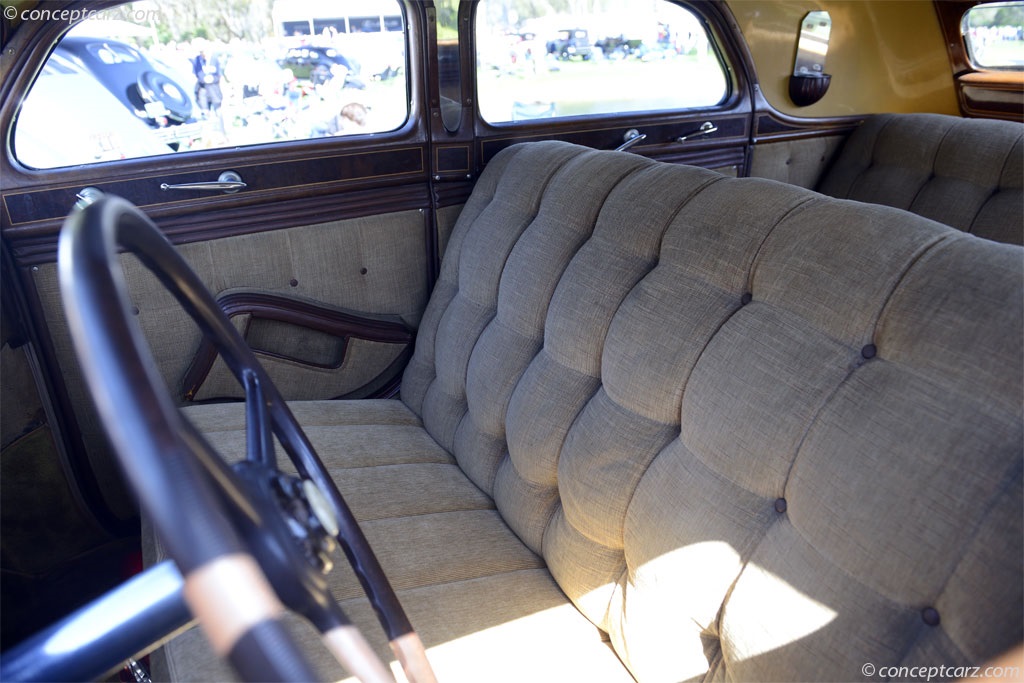Image credit: © conceptcarz.com (Reproduction Or reuse prohibited).
The Airflow automobiles represented a new school of design. They were the brainchild of Carl Breer, Fred Zeder, and Owen Skelton. They were the product of wind tunnel research and a sincere desire to make cars safer, more efficient, and better riding. Some of the advanced features of the car are seating placed between the axles (which required moving the engine 20 inches forward,) unit-body construction, a one-piece windshield, an automatic choke, an overdrive transmission, and partially concealed running boards.
The Trifon Special was the original prototype for the Chrysler Airflow. It stayed with the Company until late in the 1950s. It was then purchased by an employee, who retained it until 1997. It was then re-purchased by Chrysler. The car is original with the exception of the fenders which have been repainted.
The Trifon Special was the original prototype for the Chrysler Airflow. It stayed with the Company until late in the 1950s. It was then purchased by an employee, who retained it until 1997. It was then re-purchased by Chrysler. The car is original with the exception of the fenders which have been repainted.
Chrysler's experimental Trifon design was a break from traditional automobile architecture and is often considered the first 'modern' automobile. Work began in the late 1920s when Chrysler Corporation engineer Carl Breer began wind-tunnel testing to explore the performance-improving potential of an aerodynamically shaped automobile body. In 1932, a concept appeared that was registered as a Trifon Special instead of a Chrysler. This was done to confuse competitors.
The design concept was approved by Walter P. Chrysler who authorized the development of production cars based on this design. In 1934, the Chrysler and DeSoto Airflows were introduced to a reluctant automotive community.
The 1932 Trifon is one of the earliest surviving concept cars. The car is basically original, except for the repair and painting of damaged fenders. It has a 115-inch wheelbase and is 189 inches long. Power is from an L-Head six-cylinder unit that displaces 242 cubic inches and produces 100 horsepower. There is a three-speed transmission with a vacuum clutch and free-wheeling.
Along with the aerodynamic body, the Trifon introduced several innovations including seats that were moved between axles to reduce the pitch, bounce and jar. The trunk, head and taillights are integrated into the body design and the engine is moved forward, over the front axle. The body panels are fastened to trusses bolted to the frame - the forerunner to unibody construction. There is a one-piece curved glass windshield and longer, lower-adjusted spring suspension.By Daniel Vaughan | Nov 2010
The design concept was approved by Walter P. Chrysler who authorized the development of production cars based on this design. In 1934, the Chrysler and DeSoto Airflows were introduced to a reluctant automotive community.
The 1932 Trifon is one of the earliest surviving concept cars. The car is basically original, except for the repair and painting of damaged fenders. It has a 115-inch wheelbase and is 189 inches long. Power is from an L-Head six-cylinder unit that displaces 242 cubic inches and produces 100 horsepower. There is a three-speed transmission with a vacuum clutch and free-wheeling.
Along with the aerodynamic body, the Trifon introduced several innovations including seats that were moved between axles to reduce the pitch, bounce and jar. The trunk, head and taillights are integrated into the body design and the engine is moved forward, over the front axle. The body panels are fastened to trusses bolted to the frame - the forerunner to unibody construction. There is a one-piece curved glass windshield and longer, lower-adjusted spring suspension.By Daniel Vaughan | Nov 2010
No auction information available for this vehicle at this time.
Recent Sales of the Chrysler Airflow Trifon Concept
(Data based on Model Year 1932 sales)
Chrysler Airflow Trifon Concepts That Failed To Sell At Auction
1932 Chrysler Airflow Trifon Concept's that have appeared at auction but did not sell.
| Vehicle | Chassis | Event | High Bid | Est. Low | Est. High |
|---|
Vehicles With Comparable Market Values
Similar sales to the range.
1932 Chrysler Airflow Trifon Concept
• Additional valuation insight and sales data• History
• Specifications
• Image gallery

